Table Of Contents:
- Understanding the Challenges of Small Space Living
- Principles of Effective Space Utilization in Room Planning
- Smart Layout Strategies for Maximizing Small Spaces
- Selecting Multi-Functional Furniture and Appliances
- Selecting Multi-Functional Furniture and Appliances
- Creative Storage Solutions to Optimize Every Inch
- Design Tips to Make Small Spaces Feel Larger
Are you struggling to make the most of your small living space? With the right layout and smart design choices, you can transform any compact area into a functional and stylish home. This article will explore effective space utilization strategies, including selecting multi-functional furniture and creative storage solutions. By the end, you’ll gain practical tips to optimize every inch of your space, making it feel larger and more organized. Let’s tackle the challenges of small space living together so you can create a home that fits your lifestyle.
Understanding the Challenges of Small Space Living
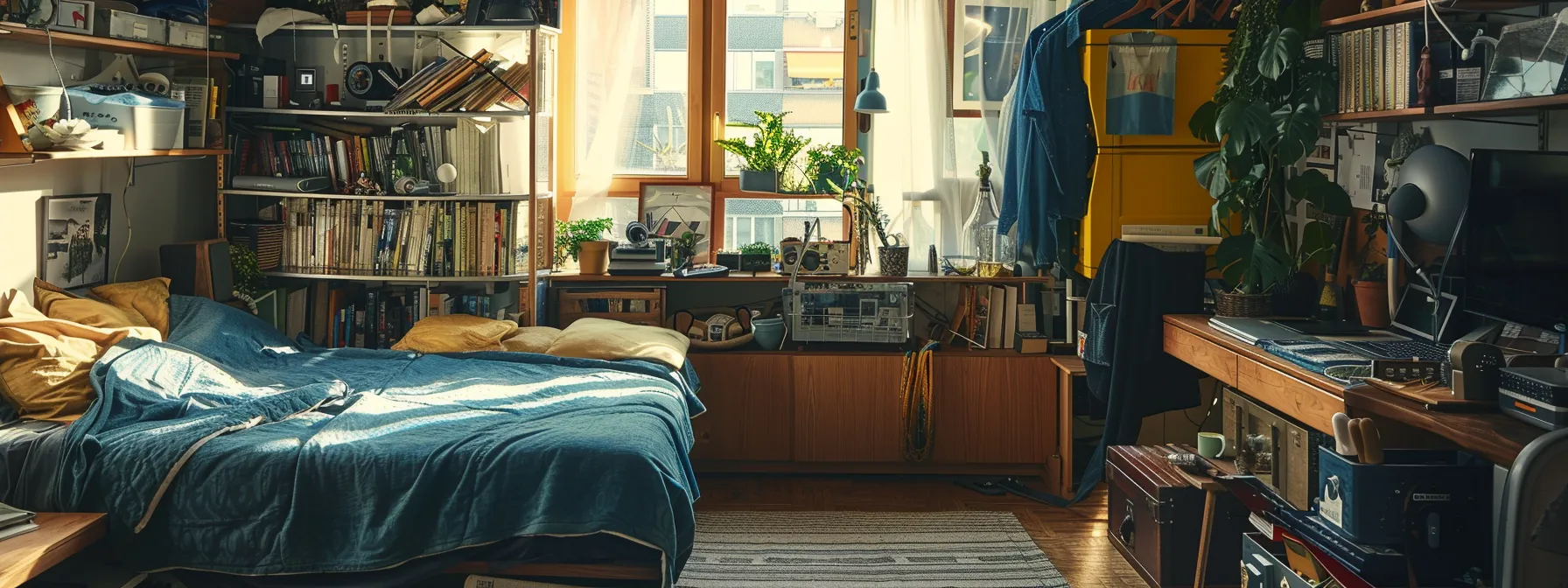
Small space living presents unique challenges that require thoughtful solutions. I often find that identifying common limitations in compact rooms is essential, as it allows me to prioritize essential functions for each area. Strategic Map Location planning becomes vital to ensure we achieve scalability and maximize return on investment for any property. In the following sections, I will delve deeper into these crucial topics to provide practical insights.
Identifying Common Limitations in Compact Rooms
When I work with compact rooms, I often encounter common limitations that affect both functionality and the user experience. Space restrictions can hinder movement, making it challenging to establish a comfortable and efficient workplace. For instance, without adequate storage solutions and flexible layouts, essential interior design elements might clash, leaving the room feeling cluttered or poorly organized. To truly enhance a small space, it’s vital to recognize these limitations and prioritize strategies that support a seamless flow and purposeful utilization of the area:
- Assessing natural light and airflow.
- Implementing versatile furniture for hot desking.
- Creating designated zones for different activities.
- Maximizing vertical space for storage and aesthetics.
- Incorporating multi-functional items to enhance usability.
Prioritizing Essential Functions for Each Space
In small spaces, prioritizing essential functions for each area is crucial for creating an efficient and harmonious environment. By focusing on integrating an effective layout with an integrated workplace management system, I can ensure that both energy and automation are utilized to their fullest potential. This approach not only enhances the functionality of the space but also helps in reducing the carbon footprint, making the environment more sustainable for everyday use.
- Identifying the core functions required for daily activities.
- Utilizing furniture that can serve multiple purposes.
- Incorporating technology for better workplace management.
- Designing flexible layouts that adapt to changing needs.
- Implementing efficient storage solutions to streamline organization.
Recognizing the Importance of Strategic Planning
Strategic planning is essential when tackling the unique challenges of small space living. By identifying key resources and laying out a building strategy for a shared space, I can enhance productivity significantly. For example, incorporating smart sensors to manage lighting and temperature can greatly improve comfort while utilizing every inch effectively.
| Strategic Element | Benefits |
|---|---|
| Resource Allocation | Maximizes use of available materials and space |
| Flexible Design | Adapts to different functions and needs |
| Smart Technology Integration | Enhances productivity through automation |
| Zone Creation | Defines areas for specific activities, aiding organization |
Living in small spaces can feel limiting, but it doesn’t have to be. With the right principles of space utilization, you can transform your room into something both functional and inviting.
Principles of Effective Space Utilization in Room Planning
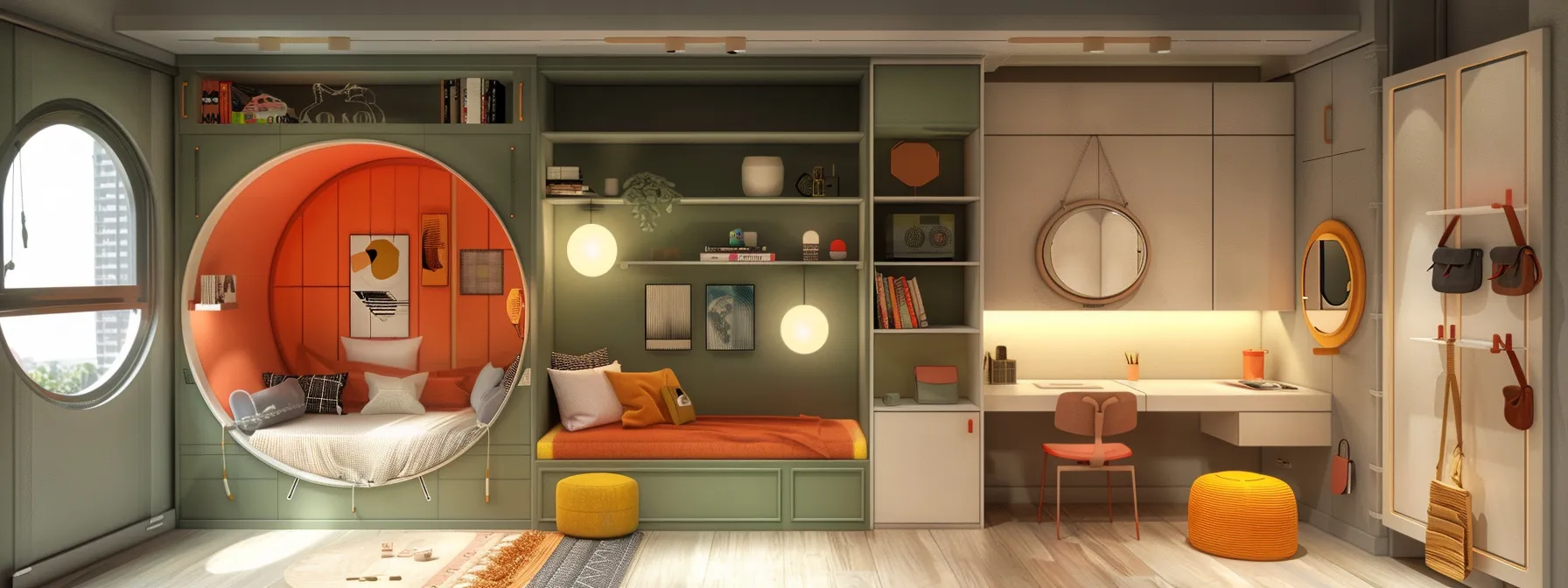
To create an effective floor plan in small spaces, I focus on assessing individual needs and lifestyle requirements. Maximizing vertical space enhances functionality, while implementing multipurpose zones can transform a room into a practical workspace. I also utilize lighting and color to improve perceived space and incorporate flexible design elements to adapt to various activities. Each of these strategies is essential for ensuring safety and comfort during both active hours and downtime.
Assessing Individual Needs and Lifestyle Requirements
Assessing individual needs and lifestyle requirements is key to achieving effective space utilization in small areas. I take the time to understand each client’s daily activities, preferences, and collaborative needs, which allows me to create layouts that promote both efficiency and comfort. By analyzing how they interact with their space, I can recommend solutions that minimize expense while maximizing utility.
| Key Considerations | Impact on Space Utilization |
|---|---|
| Client Activities | Informs layout design to enhance efficiency |
| Collaborative Requirements | Ensures space accommodates teamwork |
| Budget Constraints | Optimizes design without unnecessary expense |
| Analytics of Usage | Identifies potential adjustments for improved functionality |
Maximizing Vertical Space for Added Functionality
Maximizing vertical space is crucial for enhancing functionality, particularly in environments like higher education institutions where every square foot counts. By utilizing overhead shelving and storage solutions, I can transform underutilized wall space into functional areas that increase visibility and organization for human resources and administrative activities. For instance, implementing cloud computing solutions allows us to minimize physical clutter, while adjustable shelving can adapt to various needs, ensuring a streamlined approach to space utilization.
| Space Optimization Strategies | Benefits |
|---|---|
| Overhead Shelving | Utilizes wall space for storage |
| Cloud Computing | Reduces physical storage needs |
| Adjustable Furniture | Adapts to different activities |
| Vertical Gardens | Enhances aesthetics and air quality |
Implementing Multipurpose Zones Within a Room
Implementing multipurpose zones within a room is essential for maximizing small spaces while ensuring efficient space optimization. For instance, I often design workstations that can easily convert into relaxation areas, allowing seamless transitions for different occupancy needs. By carefully planning the layout and considering traffic flow, I enhance the infrastructure of the space, making it functional for various purposes without sacrificing comfort or accessibility.
Utilizing Light and Color to Enhance Perceived Space
Utilizing light and color is essential in maximizing small spaces while enhancing perceived usability. I often recommend using a lighter color palette, as it creates an open feel and reflects natural light effectively, which can improve the overall room ratio. Incorporating smart room scheduling techniques and sustainable materials can also elevate comfort and promote a harmonious environment, making it easier for clients to adapt their spaces according to various data points associated with their daily activities.
| Aspect | Strategy | Benefits |
|---|---|---|
| Color Palette | Opt for lighter colors | Enhances perception of space and brightness |
| Lighting | Maximize natural light | Improves mood and usability |
| Sustainability | Use eco-friendly materials | Promotes wellbeing and efficiency |
| Room Scheduling | Implement flexible layouts | Adapts to changes in usage |
Incorporating Flexible Design Elements
Incorporating flexible design elements is essential for optimizing small spaces, as it allows for adaptability in organization and functionality. For instance, utilizing modular furniture that can shift with changing needs can significantly enhance resource allocation, ensuring that every square foot serves multiple purposes. By integrating technology such as a mobile app that tracks usage patterns through data analytics, I can inform design choices that not only improve layout efficiency but also create a space that evolves alongside the user’s lifestyle.
Effective space utilization transforms rooms into havens of comfort. Next, we will explore smart layout strategies that make the most of even the smallest spaces, inviting you to rethink what is possible.
Smart Layout Strategies for Maximizing Small Spaces
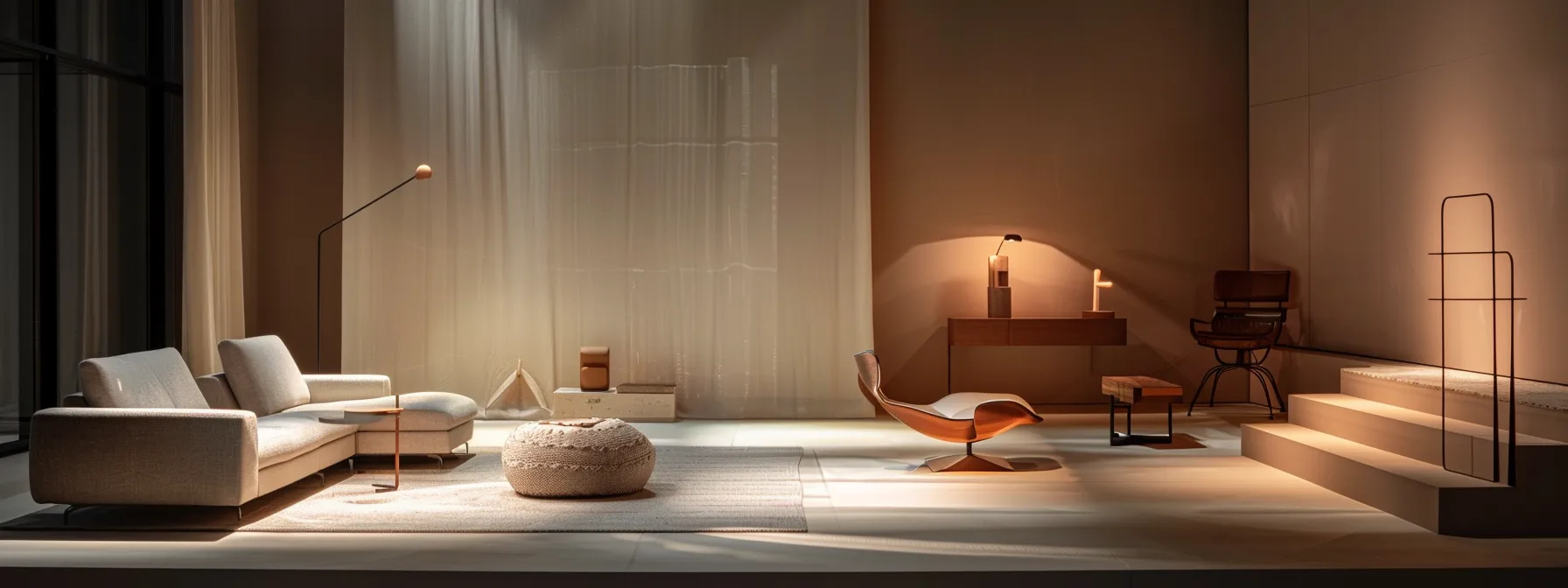
Choosing between open-plan and defined areas is crucial for maximizing small spaces, as it directly impacts functionality and comfort. I focus on optimizing furniture placement for better flow, creating illusions of space through layout, and designing floor plans tailored to specific room functions. These strategies effectively enhance asset management in construction, meeting the growing demand for efficient, smart spaces.
Choosing Between Open-Plan and Defined Areas
When choosing between open-plan and defined areas, I prioritize the specific needs of the employees and the overall culture of the organization. Open-plan designs often foster innovation and collaboration, allowing for spontaneous interactions, while defined spaces can enhance focus and privacy, which is essential for tasks that require concentration. Understanding these dynamics is crucial in facility management, as it aligns with regulatory compliance and creates an environment that supports productivity and employee well-being.
Optimizing Furniture Placement for Better Flow
When optimizing furniture placement for better flow in small spaces, I prioritize creating pathways that facilitate movement and accessibility. In my experience, thoughtful arrangements can significantly enhance coworking environments, particularly in renovations designed for remote work. A well-planned strategy includes using modular furniture and arranging items to guide users naturally from one area to another, thus maximizing space utility while maintaining comfort.
- Assess existing layouts and identify potential bottlenecks.
- Incorporate adjustable furniture to create flexible arrangements.
- Designate clear pathways that allow for easy navigation.
- Encourage collaborative spaces while ensuring private work zones.
- Utilize vertical space to keep the floor area open and airy.
Creating Illusions of Space Through Layout
Creating illusions of space through layout is a crucial strategy for enhancing the overall workflow in small environments. By implementing effective space planning techniques, I can arrange furniture and fixtures to direct the eye and maximize perceived area. One practical example includes utilizing light colors and mirrors, which can not only expand the visual footprint but also reflect natural light, reducing the carbon footprint by enhancing energy efficiency.
| Strategy | Effect on Space |
|---|---|
| Furniture Arrangement | Guides movement and improves workflow efficiency |
| Use of Mirrors | Creates the illusion of depth and openness |
| Light Color Palette | Enhances brightness, making the space feel larger |
| Layered Lighting | Adds dimension while supporting functional needs |
Designing Floor Plans Tailored to Room Functions
When designing floor plans tailored to room functions, I focus on job satisfaction and accessibility. Understanding how each room will be used allows me to create spaces that enhance both productivity and comfort. For example, I utilize data collection techniques to assess how individuals interact with their environment, ensuring that the layout supports effective leadership while easily adapting to lease requirements and future modifications.
A smart layout opens the door to endless possibilities. Next, let’s explore how selecting multi-functional furniture and appliances can transform those possibilities into reality.
Selecting Multi-Functional Furniture and Appliances

Selecting Multi-Functional Furniture and Appliances
Focusing on effective space management, I explore various strategies for selecting multi-functional furniture and appliances. Investing in convertible or folding furniture enhances density while optimizing capacity utilization. I also examine built-in furniture options that seamlessly integrate into limited spaces. Additionally, I highlight the importance of choosing space-saving appliances and customizing furniture to meet unique space requirements, incorporating the latest trends in building automation and the internet of things.
Investing in Convertible or Folding Furniture
Investing in convertible or folding furniture is a game changer for maximizing small spaces, particularly in an office layout where functionality is key. These versatile pieces allow me to adapt to peak demand situations, creating additional seating or workspace without sacrificing comfort. Additionally, by incorporating green building principles, I can select sustainable materials that enhance the aesthetics and efficiency of the environment, ultimately contributing to a productive workforce.
Exploring Built-in Furniture Options
Exploring built-in furniture options is essential for optimizing small spaces, particularly when thinking about functionality and efficiency. At YOLO Interiors Home, I have found that custom-built solutions allow for seamless integration into the floor plan while maximizing every inch of available area. By utilizing hidden storage compartments or fold-away designs, these furniture pieces provide a significant performance indicator of space management, helping clients achieve a more organized and spacious environment.
- Custom built-ins can effectively increase storage capacity.
- They offer versatile solutions for daily use and aesthetics.
- Understanding your space requirements will guide the design of these elements.
- Incorporating cabinets or desks that blend with architectural features enhances flow.
Choosing Space-Saving Appliances and Fixtures
Choosing space-saving appliances and fixtures is crucial for optimizing layout and functionality in small environments. I prioritize appliances that can be easily integrated into the design while considering their measurements to ensure they fit within the available space without overwhelming it. Utilizing facilities management software and space management software can aid in identifying the best options for each area, allowing for better organization and efficient use of room booking systems, ultimately enhancing the user experience and maximizing every square foot.
Customizing Furniture for Unique Space Requirements
Customizing furniture for unique space requirements is vital in maximizing functionality, particularly in small environments. I often measure space meticulously and analyze data to understand turnover rates and usage patterns, ensuring that each piece meets the specific needs of my clients. For example, I design modular tables that can easily adapt for meeting room scheduling, allowing seamless transitions between collaborative sessions and private gatherings:
| Customized Furniture Features | Benefits |
|---|---|
| Modular Tables | Flexible configurations for various activities |
| Integrated Storage Solutions | Reduces clutter and consumption of space |
| Multi-Functional Seating | Can adapt to diverse event types |
| Smart Technology Integration | Aids in dynamic meeting room scheduling |
With multi-functional furniture in place, the challenge of storage remains. Let’s explore creative solutions that turn every corner into a functional gem.
Creative Storage Solutions to Optimize Every Inch
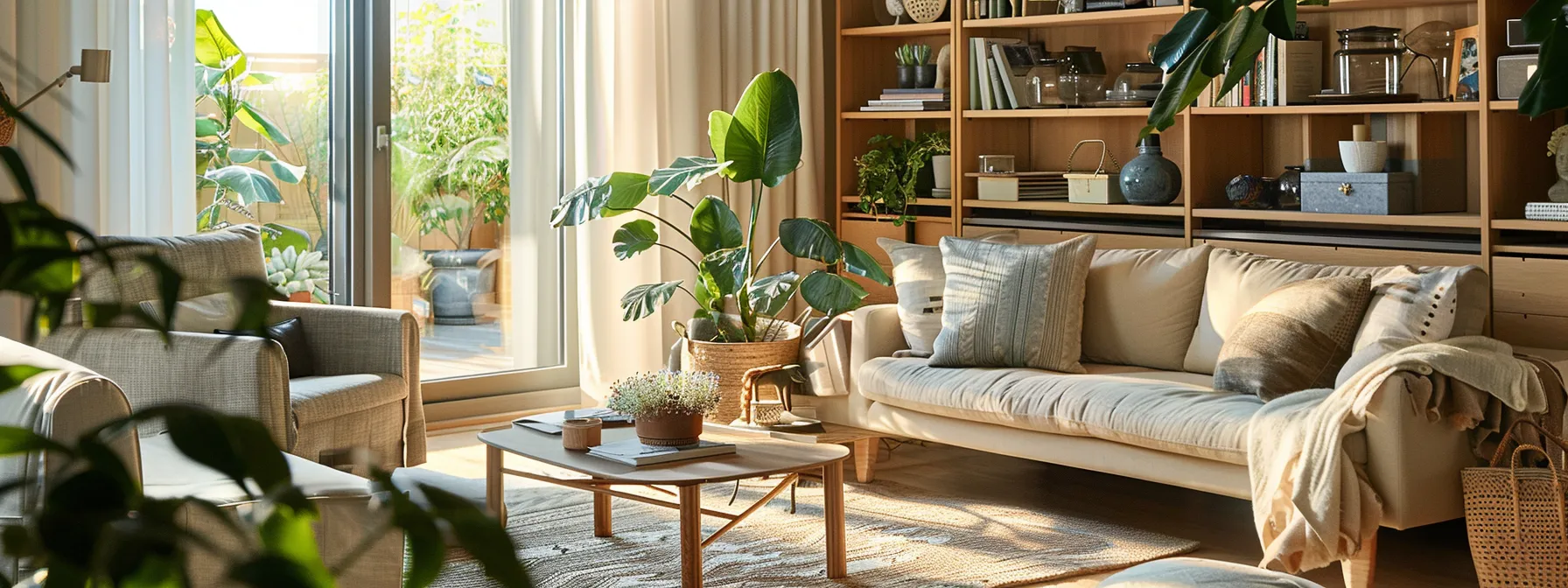
To truly maximize small spaces, I focus on creative storage solutions that optimize every inch of the footprint. Utilizing underused spaces like corners and beneath stairs can dramatically enhance organization while supporting mental health through decluttering. I will discuss implementing vertical storage with shelves and cabinets, incorporating hidden storage in furniture pieces, and organizing belongings to foster teamwork and efficiency.
Utilizing Underused Spaces Like Corners and Under Stairs
Utilizing underused spaces like corners and areas under stairs is a strategic approach I often recommend to my clients for maximizing utility in small spaces. These often overlooked sections present unique opportunities to incorporate clever storage solutions, reducing frequency and stress associated with clutter. For example, I have designed custom built-in shelves and drawers for corners, transforming them into functional spaces that mitigate the risk of wasted square footage while enhancing overall room efficiency.
Implementing Vertical Storage With Shelves and Cabinets
Implementing vertical storage solutions with shelves and cabinets is a game changer in maximizing small spaces. In environments where every square inch counts, I make it a priority to use wall space effectively, incorporating shelving units that not only provide storage but also enhance the aesthetics of the built environment. For instance, I often recommend utilizing tall filing cabinets that can double as display areas, ensuring they serve multiple functions while keeping items organized. These vertical solutions not only improve ventilation and airflow but also allow for easier brainstorming sessions by keeping necessary materials within reach without cluttering the floor space.
- Utilize wall space with tall shelves for efficient organization.
- Incorporate filing cabinets that serve dual purposes.
- Enhance ventilation and airflow by minimizing floor clutter.
- Maintain accessibility to resources for effective brainstorming.
- Promote an organized atmosphere that fosters productivity.
Incorporating Hidden Storage in Furniture Pieces
Incorporating hidden storage in furniture pieces is a concept that I often use to tackle the challenges of small spaces, especially in a hybrid workplace. My observation is that furniture with built-in storage options can significantly enhance organization while eliminating clutter. For example, I design benches and ottomans that contain compartments for storing supplies, ensuring that every available square foot contributes to an efficient hybrid work environment, reinforcing the equation of functionality and aesthetics.
Organizing Belongings to Reduce Clutter
Organizing belongings efficiently is crucial for reducing clutter in small spaces. I often advise clients to implement a systematic approach by categorizing items, which not only aids in creating a clean environment but also optimizes office space management. For instance, by allocating storage solutions that are specifically designed for different types of materials, such as folders or supplies, the organization becomes intuitive and easy to maintain, enhancing the functionality of meeting rooms and overall facilities management:
| Organizational Strategy | Benefits |
|---|---|
| Categorizing Items | Improves efficiency and avoids clutter build-up |
| Designated Storage Solutions | Streamlines access to necessary materials during meetings |
| Regular Inventory Audits | Ensures materials are current and relevant, supporting energy management |
Creative storage lifts the weight of clutter, making every corner count. With that clarity, we turn to clever design tips that can breathe life into small spaces, helping them feel open and inviting.
Design Tips to Make Small Spaces Feel Larger
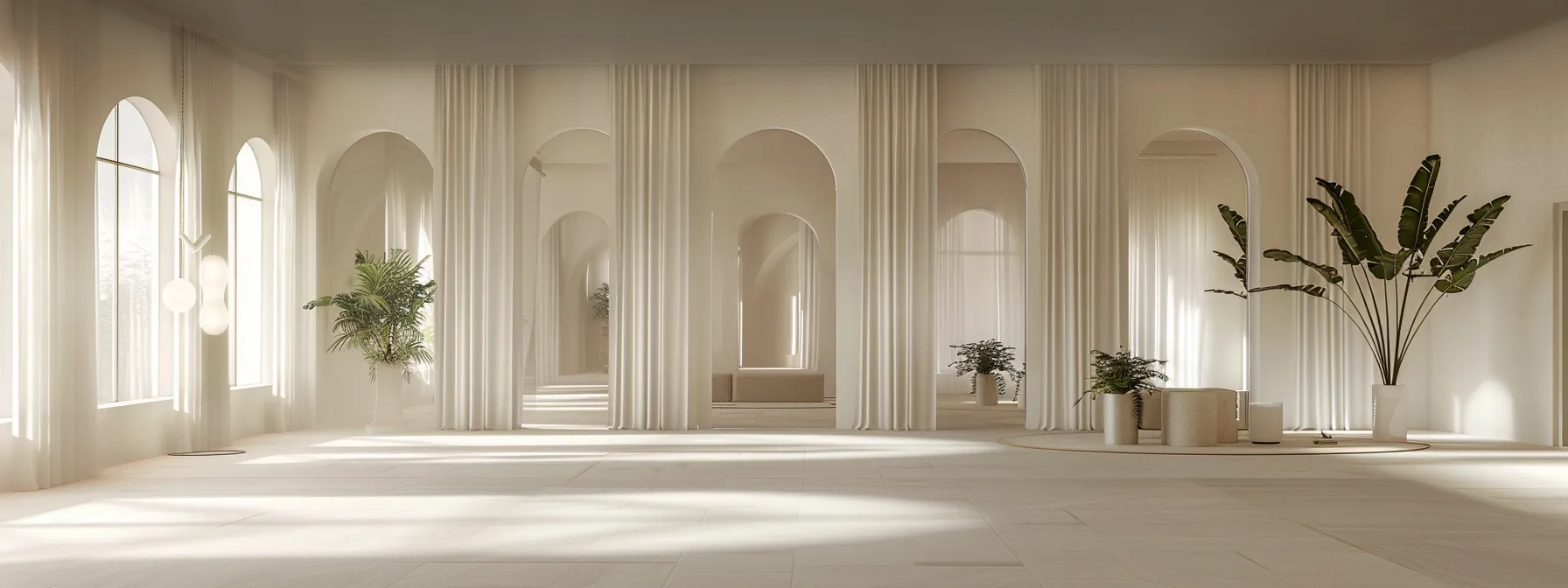
To make small spaces feel larger, I focus on strategic design elements. Using mirrors and reflective surfaces effectively can amplify light and space perception, while selecting light colors and minimal patterns helps create an open-plan environment. Allowing natural light to flow enhances the atmosphere, and choosing appropriately scaled decor guarantees a cohesive look, promoting autonomy in behavior and seamless adoption of design principles.
Using Mirrors and Reflective Surfaces Effectively
Using mirrors and reflective surfaces is a practical strategy I often implement in small spaces to create an illusion of depth and brightness. These elements can be strategically placed to enhance natural light flow, improving both aesthetics and logistics within the room. For example, positioning a large mirror across from a window not only expands the visual area but can also significantly brighten the space, addressing any feelings of confinement and promoting a more inviting atmosphere.
Selecting Light Colors and Minimal Patterns
Selecting light colors and minimal patterns is essential for creating the illusion of space in small areas. By using a soft color palette, I can make any room feel more open and inviting. For example, painting walls in pastel shades or using light-colored furniture can effectively reflect natural light, which helps to brighten the space and enhance its overall ambiance. Moreover, minimizing patterns allows for a cleaner aesthetic that reduces visual clutter, making the area feel less cramped and more conducive to relaxation or productivity:
| Design Element | Impact on Space Perception |
|---|---|
| Light Color Palette | Expands the visual space and reflects light |
| Minimal Patterns | Reduces cluttered visuals, promoting calmness |
| Natural Light Utilization | Enhances the atmosphere and improves mood |
| Reflective Surfaces | Amplifies brightness and creates depth |
Allowing Natural Light to Enhance the Space
Allowing natural light to flow into a space is one of the most effective strategies I’ve found for making small areas feel larger and more inviting. In my projects, I prioritize window placement and choose lighter window treatments to maximize sunlight. Additionally, incorporating mirrors positioned to reflect light can further enhance the brightness of a room, effectively expanding the visual space and creating a more open atmosphere.
Choosing Appropriately Scaled Decor and Accessories
Choosing appropriately scaled decor and accessories is fundamental for maximizing the sense of space in smaller areas. I recommend selecting furniture and decorative elements that align with the room‘s dimensions to avoid overwhelming the space. For example, opting for a slim sofa rather than a bulky sectional can keep the room feeling airy, while incorporating smaller decorative items like accent pillows or minimalist art can add character without causing visual clutter.
| Decor Item | Recommended Size | Impact on Space |
|---|---|---|
| Sofa | Compact design | Maintains openness and flow |
| Accent Chair | Armless or low-profile | Enhances seating without bulk |
| Decorative Accessories | Small to medium scale | Adds character without clutter |
| Artwork | Single large piece or a few smaller ones | Creates focal points that draw the eye |

